Lurie House (Usonia Historic District)
Introduction
Text-to-speech Audio
Japanese-American architect Kaneji Domoto (1912-2002) designed five of the forty-seven homes in the Usonia Historic District in Pleasantville, New York, between 1948 and 1955. The first home Domoto worked on was the Lurie House, constructed 1949-1950. The Lurie House was part of Domoto’s experimentation with “Japanese” motifs that emphasized low-cost construction, landscape design, and environmental responsiveness. It is a one-story L-shaped residence, constructed of concrete, horizontal cypress siding, and fieldstone, and includes a large fieldstone chimney. The Lurie House is included in the Usonia Historic District, which was placed on the National Register of Historic Places in 2012.
Images
Lurie House (Kaneji Domoto, architect) photo by Thad Russell
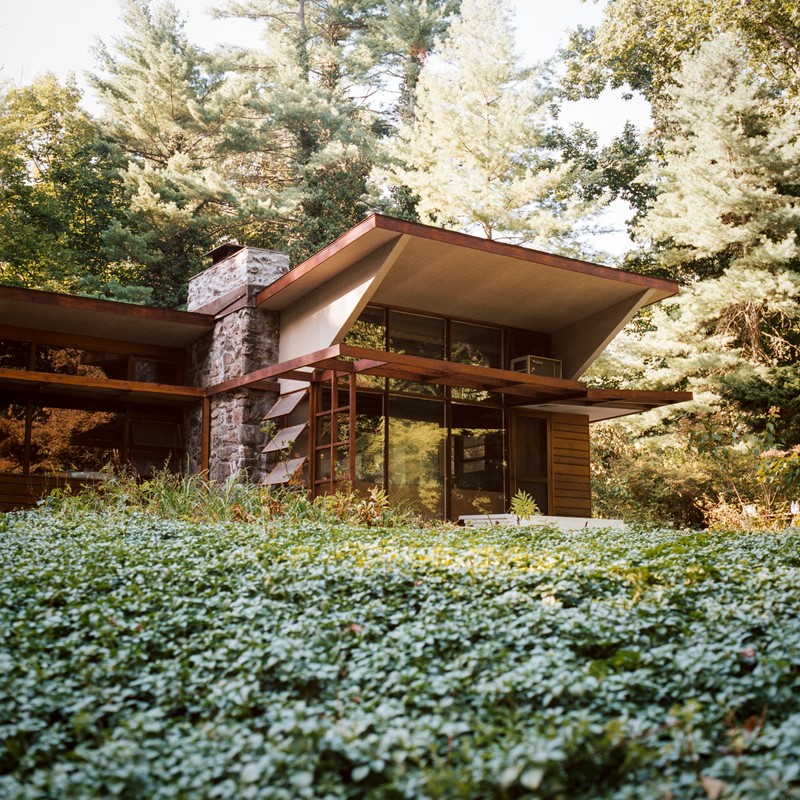
Lurie House (Kaneji Domoto, architect) photo by Thad Russell
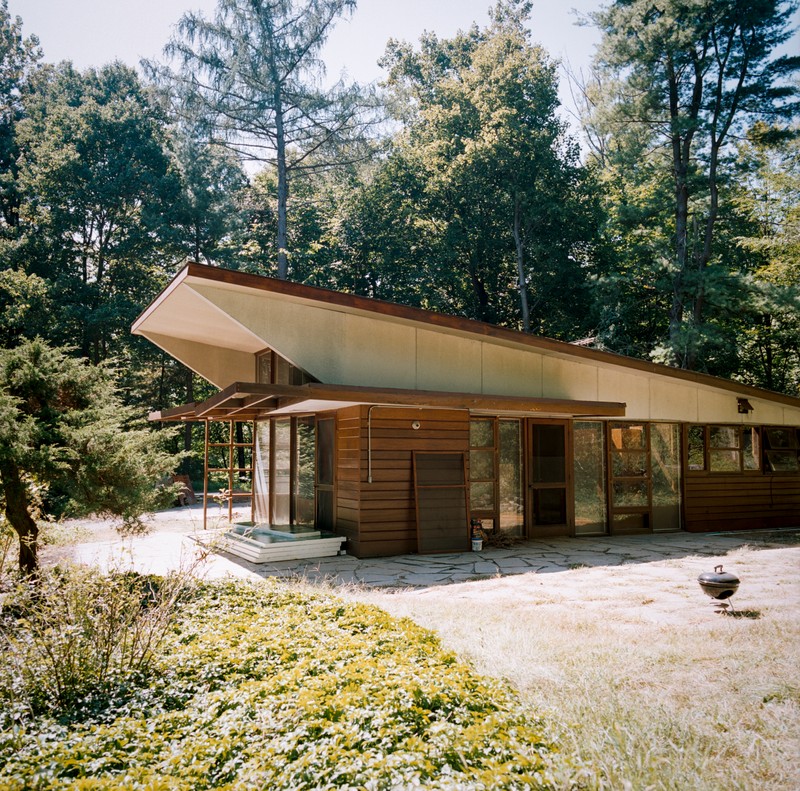
Lurie House (Kaneji Domoto, architect) photo by Thad Russell
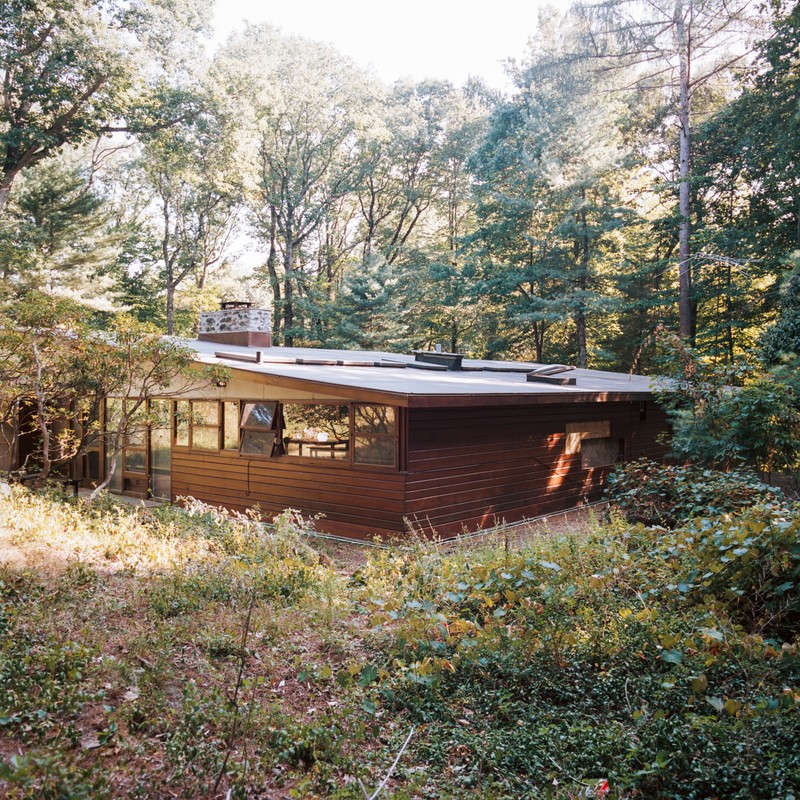
Lurie House (Kaneji Domoto, architect) photo by Thad Russell
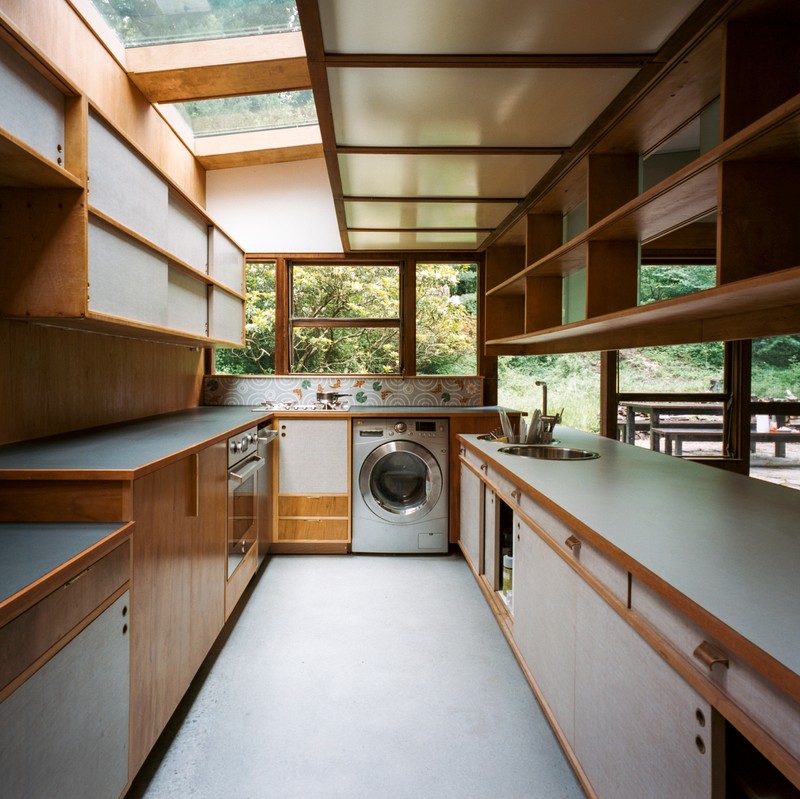
Lurie House (Kaneji Domoto, architect) photo by Thad Russell
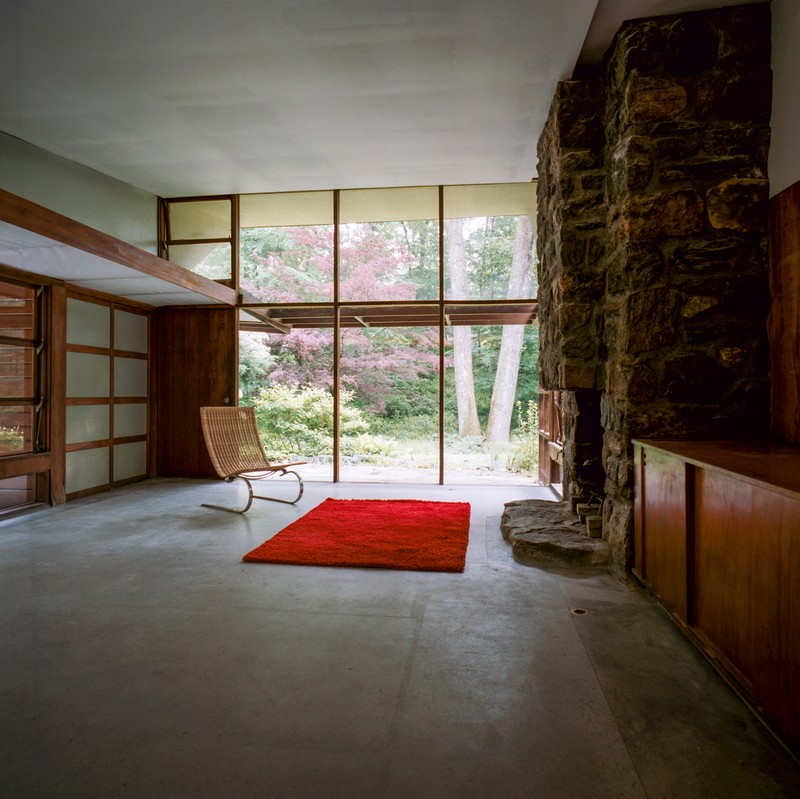
Backstory and Context
Text-to-speech Audio
Architect Kaneji Domoto spent his early years working in his Japanese émigré family’s landscaping business before pursuing his architecture degree at the University of California, Berkeley. He then went on to study with Frank Lloyd Wright at Taliesin in Wisconsin. While at Taliesin, Domoto's endeavors were interrupted when in 1942-1943 he and other Japanese Americans were dispossessed and forced into internment camps during World War II. After the War, Domoto worked in New York City for Morris Lapidus, Raymond Loewy, and William Lescaze. He was then chosen by Wright to collaborate on Usonia, where he designed and completed five homes. In addition to the Lurie House, Domoto also designed the Bier, Harris, Siegel, and Silson homes in Usonia. Kaneji Domoto ultimately settled in New Rochelle, NY, where he spent the next four decades practicing architecture and landscape architecture.
The original Lurie House was restored by architect L. Widder of Columbia University. She received a Citation of Merit in 2018 from Docomomo US for the success she and her team achieved in finding creative solutions that brought the house’s heating and mechanical systems up to date while minimally impacting the original design. Widder and her team were also successful in salvaging original wood materials used on the home’s exterior that were carefully removed, restored, and replaced during renovations.
Sources
- Fazzare, Elizabeth. “The Complicated Story Behind the Only Japanese-American Architect at Frank Lloyd Wright’s Usonia.” Architectural Digest. June 22, 2017. https://www.architecturaldigest.com/story/kaneji-domoto-only-japanese-american-architect-at-frank-lloyd-wright-usonia. Accessed Nov 8, 2021.
- “Kaneji Domoto in Usonia.” Docomomo US. October 2019. Accessed Oct 12, 2021. https://www.docomomo-us.org/event/kaneji-domoto-in-usonia
- “Lurie House.” Docomomo US. Accessed Oct 26, 2021 https://docomomo-us.org/register/lurie-house
- Reisley, Roland. Usonia, New York: Building a Community with Frank Lloyd Wright. Princeton Architectural Press. 2003.
- Trufelman, Avery. “Usonia the Beautiful (Episode 247).” 99% Invisible. Feb 14, 2017. https://99percentinvisible.org/episode/usonia-the-beautiful/.
- “Usonia Historic District #12000600.” National Register of Historic Places. United States Department of the Interior/National Park Service. Sept 5, 2012. https://catalog.archives.gov/id/75323279
- Widder, Lynnette as told to Sarah Fecht. "How I Preserved A Historic House While Making It More Energy Efficient." State of the Planet: News from the Colombia Climate School. May 14, 2018. Accessed Feb 28, 2022. https://news.climate.columbia.edu/2018/05/14/lurie-house-preservation-energy-efficiency/
Thad Russell
Thad Russell
Thad Russell
Thad Russell
Thad Russell
